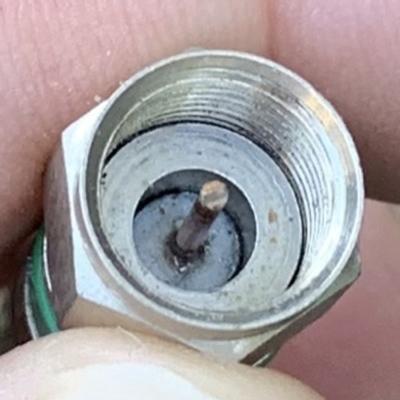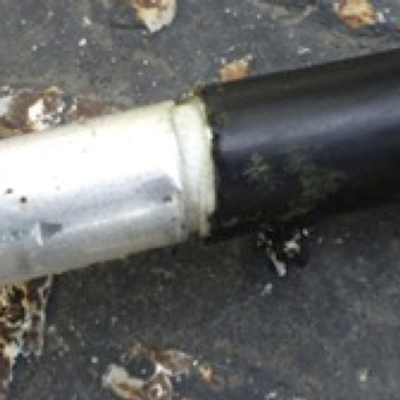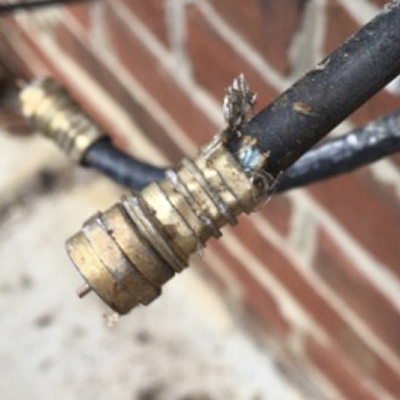What Can DOCSIS PNM Do For Me?
By Brady S. Volpe
Proactive network maintenance (PNM) has been steadily growing in acceptance and popularity over the past several years with adoption amongst cable operators from Tier 1 such as Comcast all the way to the smallest Tier 4 operators — both in the U.S. and internationally — as a tool for optimizing their work force and improving subscriber quality of experience (QoE). No longer is it seen as a shiny gimmick or a novelty to detect the poltergeist in the network before it goes bump in the night. It is a go-to network maintenance tool with the added benefits of workforce optimization.
PNM DOCSIS Overview
PNM in Data-Over-Cable Service Interface Specifications (DOCSIS) collects a number of key metrics including equalization data from cable modems, downstream spectrum capture from modems and upstream spectrum capture from the cable modem termination system (CMTS). Along with traditional SNMP metrics, this data is used to identify physical layer impairments often not identifiable with legacy monitoring systems and meters. Two key takeaways with a properly orchestrated PNM system is that it provides visibility into impairments most operators have lacked visibility into, and it provides clear, visible and actionable insights, such as whether the impairment is in the subscriber’s home or in the outside plant. This alone drives key decisions as to which resource to send (and where to send it!) in order to resolve a problem — intelligent problem solving = resource optimization.
Types of Problems Proactively Found
Proactive tools are rapidly seen as must-have tools as the need for nearly every industry to resolve issues before they occur is increasingly under demand. DOCSIS PNM specifically focuses on the physical RF plant. This means coax cable, connectors, and passive and active devices. Everything from the CMTS to the cable modem (CM).
Interestingly, the CMTS and CM are rarely the sources of problems. In fact, systems that use PNM see a rapid decrease in unnecessary modem replacements — the modem was never bad in the first place. The most frequently found problem is typically bad or improperly installed F connectors, such as the one in Figure 1.

Figure 1: F connector not flush with the cable’s dielectric
When connectors are not properly installed, this can create a number of problems:
- Micro-reflections
- Intermittent connections
- Signal ingress
- Signal egress
The aforementioned problems are difficult to detect with a traditional signal level meter (SLM) but can cause intermittent issues with cable modems and set top boxes resulting in repeat calls to the subscriber’s home. Further, improperly installed connectors allow egress out of the plant, causing possible regulatory issues with FCC Part 76 leakage regulations, as well as upstream and downstream ingress, potentially impacting many (or all!) subscribers on the same fiber node.
Figure 2 illustrates another common issue identified with PNM — outside plant impairments.

Figure 2: Trunk line outer shielding cut by technician when coring cable for connector
In Figure 2 we see that the outer shield on a hardline coax has been cut the entire way around when a technician was over zealous during coring. When the shielding is compromised, the coaxial cable’s impedance is no longer 75 ohms. This results in a major impedance mismatch, or micro-reflection. Further, ingress and egress will result from this exposed section of coax.
In the examples of Figures 1 and 2, these impairments may or may not be immediately obvious to the technician depending on the severity of the damage. However, one fact we know is that cable does not get better over time. Water ingress will create more corrosion and these impairments will result in eventual outages of either single modems or clusters of modems. The impact will be dissatisfied subscribers, and technicians in firefighting mode to find and fix the root cause.
What if there were a better method? A way that we could find these impairments before the customer was impacted. There is. It’s PNM.
Impact to Home Techs
PNM starts with home installation technicians. They are the front line, installing new modems every day or visiting subscribers who are calling about issues with their modems. Having worked with PNM since 2012 I can tell you two facts: 1) the majority of return path ingress comes from individual subscribers’ homes, 2) the majority of hard to find impairments causing repeat truck rolls come from subscribers’ homes. And this is where the home techs spend most of their time.
Given the new visibility into micro-reflections and group delay, home techs can now see impairments previously hidden to them. Micro-reflections are typically the dominant issue in subscribers’ homes due to bad wiring, such as the example shown in Figure 3.

Figure 3: Crimp-on connector showing poor grounding and corrosion on shielding
The example shown in Figure 3 is often difficult to find, especially when it exists under crawl spaces or trailers. However, the impacts can be maddening for technicians trying to resolve modem issues for impatient home owners. Modems will report T3 timeouts, slow speeds, uncorrectable codeword errors and intermittently drop offline. Often times the modem will be replaced by the tech in futility because traditional SLMs will not show micro-reflections. PNM will quickly show the micro-reflection and even estimate the distance to the micro-reflection, quickly showing the tech that there is a problem and where to look for the problem.
Every time a home tech installs a new modem or has an opportunity to gain access to a customer premise, this is an opportunity to be proactive. PNM gives the home tech the ability to test the subscribers’ homes for several typical performance parameters, such as power levels and modulation error ratio (MER), but more importantly they can test PNM metrics such as group delay, micro-reflections and full band capture. These additional metrics go far to ensure every modem installed will perform well for the subscriber and will not allow ingress into the plant provided the tests pass. If the tests fail, the home tech should resolve the issues or escalate them to a more senior tech.
Impact to Maintenance Techs
Maintenance or field technicians face the same issues as home techs: impairments that are invisible with traditional tools. PNM provides visibility. Maintenance techs can now also see micro-reflections, damage to the outside plant, and group delay.
By identifying groups of modems affected by the same outside plant damage, we are able to form a “correlation group.” This is a cluster of modems seeing the same impairment. This cluster of modems can help triangulate and localize the outside plant impairment, thus identifying its location. Now maintenance techs know there is an outside plant impairment, they know how severe it is, where it is located and how many subscribers are impacted.
Frequently, outside plant impairments are made visible before subscribers notice the plant impairment. This is key to being proactive. The plant damage can be fixed on a schedule convenient to the operator or can be ignored until it degrades to the point that subscribers start to call CSRs. This becomes a company decision as to how they handle proactive activities.
Management Buy-in
Management buy-in to PNM is a key factor in the success or failure of any proactive program within an organization. Being reactive is what the industry has always done; sure, it worked, but you always hear stories like “we are swamped with fires!” or “we cannot get anything done because of all the firefighting with our reactive tools.” One sees a fire and puts it out. However, being reactive, or waiting for alarms is more time consuming and spreads your workforce thin. The philosophy to resolve issues before they impact the subscriber must be endemic throughout the organization if there is truly a desire to improve the subscriber’s quality of experience and manage one’s workforce better. Also, one cannot expect home installers to take this initiative if it is not coming down from management to fully implement PNM. PNM is an amazing tool, but it takes directive from the top to use the tool to its utmost.
Impact to Subscribers
PNM gives insight where it never was before. Without PNM we can just let cable, actives, passives and connectors deteriorate until our subscribers call and complain or another fire breaks out. However, we fundamentally know that happy subscribers tend to stick with our services and not complain about our companies on social media. Happy subscribers make for happy bosses. PNM enables us to find and resolve many physical layer problems before they impact subscribers.
Summary
The time of PNM is now. It is mature and in use by large and small cable operators globally with great results. Whether the goal is to optimize your workforce, improve your customer QoE or both, there is no disputing that when put to use, PNM will make a difference in your network.
 Brady S. Volpe
Brady S. Volpe
brady.volpe@volpefirm.com
Brady Volpe is Founder of The Volpe Firm, Inc and Nimble This LLC. He has over 25 years of broadband cable and telecommunications industry experience specializing in RF, DOCSIS, PNM, and Internet Protocol. Mr. Volpe has been providing a wide range of troubleshooting, design solutions, services and seminars for cable operators and broadband companies specializing in DOCSIS, System Design, PNM, and Troubleshooting. He is a highly respected published speaker, both domestically and internationally. He also hosts a popular industry YouTube and Podcast – “Get Your Tech On“. Mr. Volpe holds a BSEE and a MSEE.
Image: Shutterstock.com




